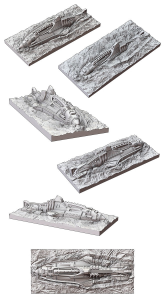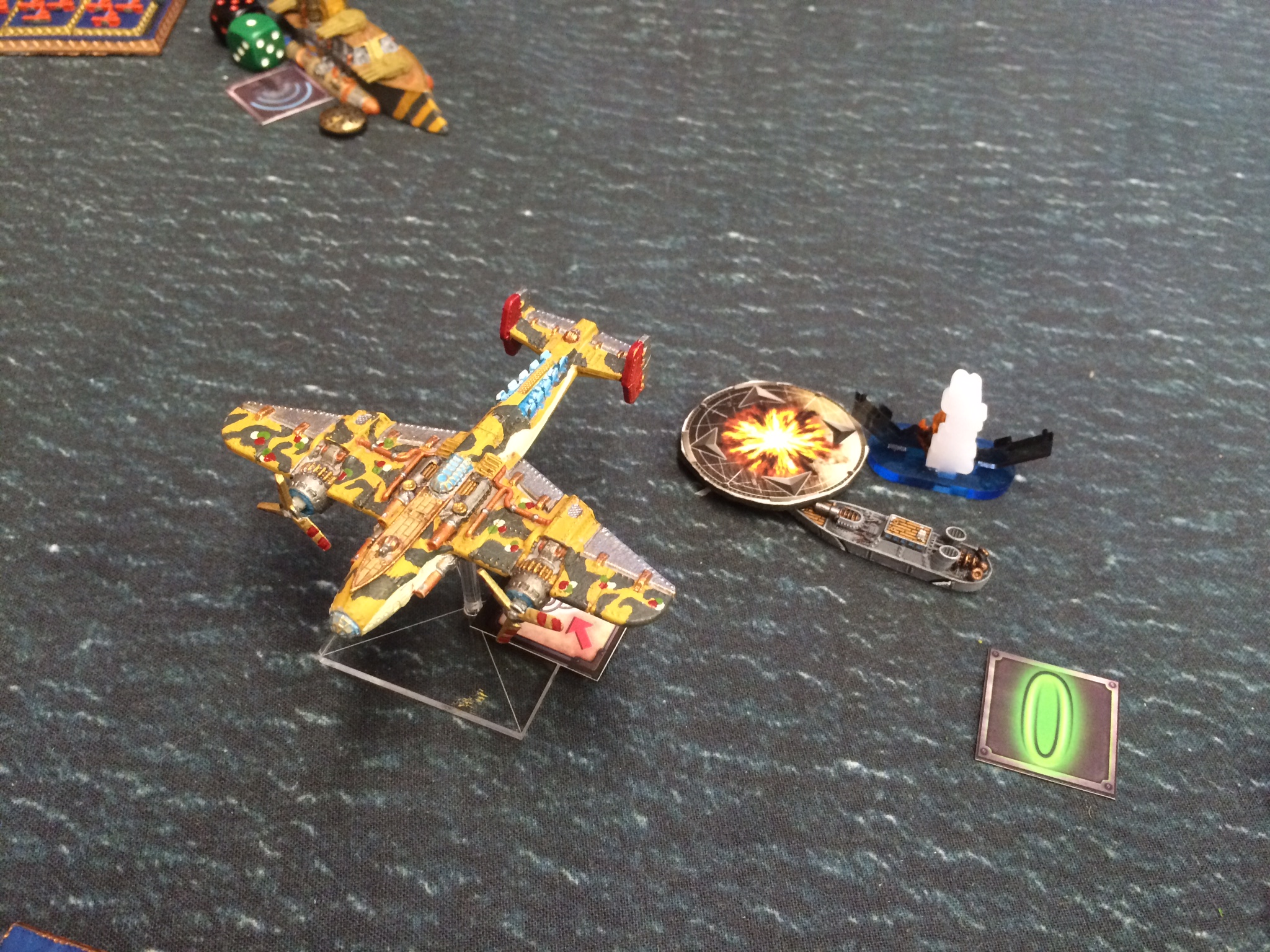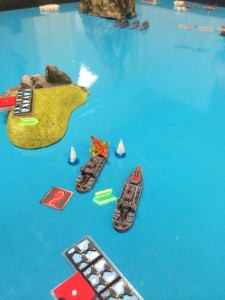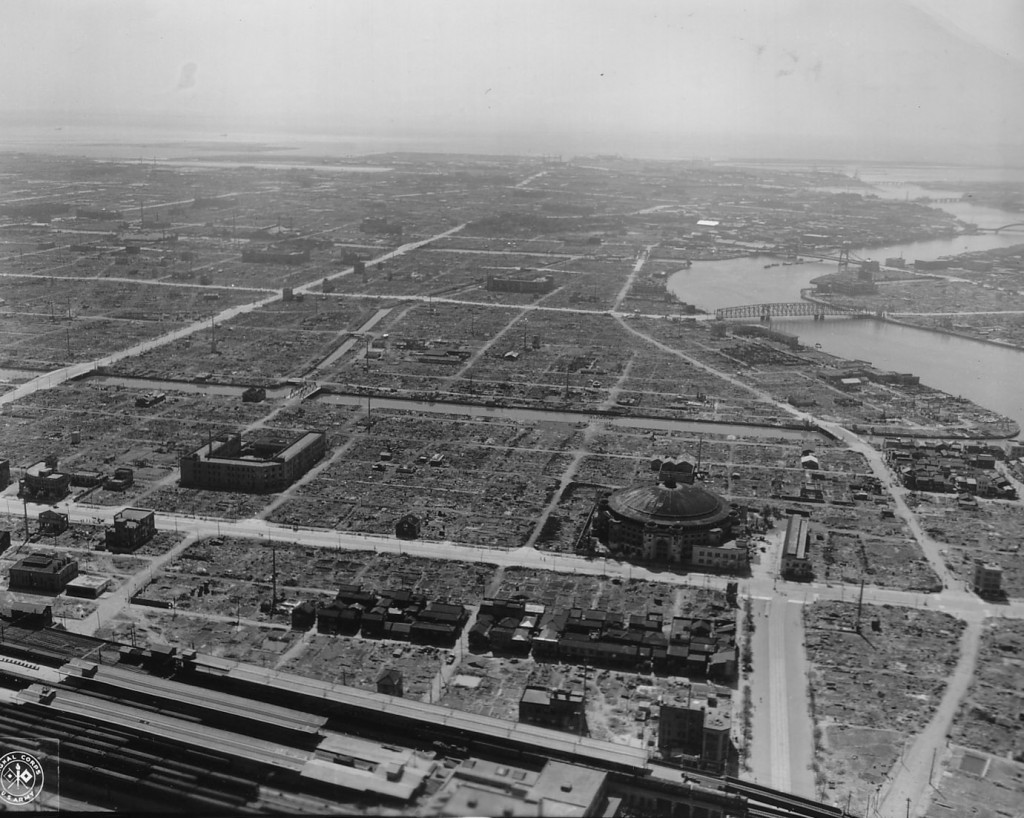Foreward
Before I get too far into this, I should point out that I recognize that Warcradle has plans to make significant changes to the background story for Dystopian Wars. However, as yet the details have not been revealed to the general public, so I felt it this would be a good opportunity to take a look at how the “old” fluff compares to our own real world history, with the idea that this post can serve as a point of comparison once the new fluff is revealed in the fullness of time. On with the show!
Introduction
Scene: A Friendly Local Game Store. I’m playing a game of Dystopian Wars with a friend on a table in a corner, having great fun rolling buckets of dice and sinking ships. A curious stranger, drawn by the unique aesthetics of the game, stops buy to have a look.
Me: Hi there! How are you today?
Stranger: Oh, hello! What game is this?
Me: This is Dystopian Wars.
Stranger: Oh, cool. What’s the game about?
Me: It’s essentially World War II, 70 years before it actually happened, with all kinds of crazy steam-powered stompy robots and flying aircraft carriers.
The scene I just described, with slight variations, has played out numerous times for me over the years that I’ve been playing Dystopian Wars (DW). The game’s setting focuses on a world-wide conflict, and the natural thought progression is to try and place the fictional war showcased in the game into context with a real conflict from our own history. In other words, the game begs the question “Which real war is the Dystopian War most similar too?” For me, the comparison of DW to World War II (WWII) seems to come naturally, almost unbidden, and in this essay I want to examine why that is so. From my perspective, DW is closest to WWII due to the level of technology employed, the geo-political alignment of the great powers involved, and the scale of the conflict.
Technology
Combat in DW is clearly a very mechanized affair. Large tanks and landships roam the battlefield in great numbers. Aircraft (including naval aviation and aircraft carriers) are in widespread use and appear to have reached a significant level of maturity and sophistication. Naval surface units employ steam propulsion, turreted armament, and torpedoes, while deadly submarines attack from below. Producing, moving, and supporting all of these machines implies that the major powers in DW have developed complex industrial economies, which corresponds well to the 1930s and 1940s of our own world. In making our comparisons in weapons development between our world and the Dystopian one, it may be useful to limit our consideration to a handful of specific examples that can act as an index of sorts for relative technology levels.
For our purposes, I think aircraft, armored fighting vehicles (AFVs), and submarines will do nicely. For example, the aircraft employed by the major powers in DW for the most part appear to be metal skinned mono-wing craft (some powers, like the Italians, seem to be holding on to biplanes and tri-planes). In our world, combat aircraft with these characteristics didn’t appear until the late 1930’s, and saw their first wide-spread combat use during WWII. It’s likely not an accident that a number of DW aircraft bear physical similarities to WWII aircraft from our world; the Federated States of America tiny flyers bear a strong resemblance to the F4U Corsair, to name one example. As one might expect, the development of aviation technology was paralleled by the development and wide-spread use of aircraft carriers (CVs), which didn’t reach the level of effectiveness demonstrated by DW CVs until the 1930’s. Moving on to AFVs, it is true that they first saw wide-spread use during World War I, and that many of the AFVs shown in DW (especially the Britannians) bear some physical resemblance to these early vehicles. However, the AFVs used in WWI were slow, unreliable, and produced on the order of a few thousand vehicles. During WWII, AFV design and production had progressed to the point that tanks were being produced in the tens of thousands, and were reliable enough to conduct the sweeping deep penetration attacks required by maneuver warfare. The numbers of AFVs seen on the DW battlefield, as well as their combat capability, are a much better match for WWII. Our third example, submarines, are another weapon that first saw wide-spread combat use during WWI.  However, compared to their WWII successors, WWI submarines were small, slow, and short ranged. All but a handful of WWI submarine designs were unable to patrol more than a few hundred nautical miles from friendly ports, and like early AFVs they tended to be mechanically unreliable. During the 1920s and 30s, a number of key technologies (especially engine and battery technology) matured to the point that a the first “fleet boats,” submarines that were fast enough and reliable enough to accompany the battle fleet on operations, began to appear. The way submarines are employed in DW, where they are tactical units coordinating with naval and air units during an engagement, suggests levels of technology that are at least comparable to those of WWII.
However, compared to their WWII successors, WWI submarines were small, slow, and short ranged. All but a handful of WWI submarine designs were unable to patrol more than a few hundred nautical miles from friendly ports, and like early AFVs they tended to be mechanically unreliable. During the 1920s and 30s, a number of key technologies (especially engine and battery technology) matured to the point that a the first “fleet boats,” submarines that were fast enough and reliable enough to accompany the battle fleet on operations, began to appear. The way submarines are employed in DW, where they are tactical units coordinating with naval and air units during an engagement, suggests levels of technology that are at least comparable to those of WWII.
Geo-Political Landscape
During WWII, the key belligerents were the Soviet Union, Germany, Italy, the United Kingdom, Japan, and the United States of America. The Americans, Soviets, and UK formed the Allied powers, while Germany, Italy, and Japan formed the Axis powers. While these were the key players, there are some nuances worth exploring. For example, the UK was supported by its empire, including India, and its commonwealths, such as Canada, Australia, and New Zealand. Likewise, German forces included units raised from occupied territories such as Romania and Norway, and while the Red Army was of course predominantly Russian, it also included a troops from a number of non-Russian regions such as the Ukraine. In Dystopian Wars, the national power structure is similar, though slightly different due to the alternate history nature of the setting. The major powers include the Federated States of America (FSA), the Kingdom of Britannia (KoB), the Russian Federation (RF), the Republique of France (ROF), the Prussian Empire (PE), the Empire of the Blazing Sun (EotBS), and the Covenant of Antarctica (CoA). Many of these “major” factions are supported by “minor” factions, just as the Axis and Allies were in WWII; for example, the KoB is supported by the Indian Raj, while the PE can count Denmark and the Scandinavian Teutonic Order among its allies.
By and large, though their names are different the various DW powers control largely the same territory as the did during the late 19th and early 20th centuries in our world, and are culturally similar as well. For example, the FSA has replaced the United States, though it appears to still be recognizably American in terms of its culture, and the boundaries of it’s home territory are familiar as well (essentially it is the lower 48 plus Mexico). The major powers in DW have aligned themselves into either the Grand Alliance (KoB, FSA, and RF) or the Imperial Bond (PE, RoF, and EotBS), which roughly correspond to the Allied and Axis powers of WWII, respectively. The single major difference is the apparent swap of the RoF for Italy in the line-up of the core powers in the Imperial Bond; the League of Italian States is still aligned with the Imperial Bond, but appears to not be a full partner in the same way that Italy was a core member of the Axis. There is a major wrinkle in the DW global political structure, namely the presence of a third nexus of power in the CoA; there is obviously no direct analog to the COA in the “real world,” and its existence is tied to the events and technologies that are at the roots of what makes the DW world different from our own. Despite the presence of the CoA though, looking at a map of the DW world immediately brings to mind a world map from our own 1941 or 1942; continental Europe and East Asia are fighting against the British Empire, North America, and Russia.
Scale of the Conflict
When we talk about the scale of a war, we may think of it in terms of the size of the forces involved, counting the numbers of soldiers, ships, planes, and the like that are involved in the conflict. We might also reckon the scale of a war in geographical terms; how many theaters was the war fought in, and the amount of territory the belligerents gained or lost. Another way to categorize the scale of a war is in temporal means, by looking at the length of time the war took from beginning to end. In all of these measures, a solid case can be made that DW has some significant parallels to WWII. I’ve already touched on the similarities when it comes to the size of forces earlier in the technology section. Likewise, the geographic similarities were discussed in the previous section on geo politics. I haven’t mentioned the length of the DW conflict as it compares to WWII, though its clear that the war portrayed by the game is a long and bloody struggle that stretches out over multiple years like WWII did.
However, none of these points is really what I wanted to highlight in this section. No, what I meant by “scale” in this context has more to do with the aims of the major belligerent powers. Like WWII, I contend that what is going on in DW is what is known as “Total War.” Total War, simply put, is a war where one or more of the belligerents are fighting for their national survival. If that side looses, then they will cease to exist as a political entity. This is contrasted with Limited War, where a nation’s survival is not at stake. WWII can generally be considered a Total War, as the defeated Axis powers were completely dismantled and no longer existed in the same fashion as they did before the war started. Total war is often accompanied by a full mobilization of a nation’s resources for the war effort, including its citizenry. Likewise, in that situation the distinction between combatant and non-combatant becomes blurred, leading to strategies such as unrestricted submarine warfare and the mass-bombing of urban centers.
Based on what Spartan described in its fluff up until the company closed, the conflict in DW is most definitely what I would consider a total war. There have been descriptions of attacks on civilian targets (such as the PE attack on London in 1870), tales of untold destruction to vast swaths of territory, and of course there is the fact that all sides are employing huge quantities of materiel that logically would have demanded full mobilization of their respective economies to generate (except for the COA, which apparently can get by with robot operated factories!). I like wise get the sense that at least some of the major powers are facing up to possible annihilation and dismantlement; the KOB government was making plans to flee to Canada, for example, after an invasion by RoF and PE forces.
A Flawed Metaphor
No doubt, many of you who are reading this article are also students of history, and by now probably have all kinds of arguments to counter my interpretation (hopefully I at least got the facts of what I’ve said correct!). I certainly grant that, like a lot of metaphors, asserting that DW is like a Steampunk WWII can start to break down if stretched too far. Here are some of the holes I can pick in my own argument, which will hopefully cover the bases!
First, while there are a lot of cultural and geographical similarities between the Axis and Allies of WWII and the Imperial Bond and Grand Alliance of DW, there are some vast differences in political structure and ideology that must be recognized. The PE is not Nazi Germany, no more than the RF is the Soviet Union. The factions of DW do not carry the ultra-nationalistic and racist baggage of WWII. Second, the economic balance of the DW world seems to be much more even than it was in our world during WWII. All of the major powers in DW seem to be on roughly the same footing in regards to population, resources, and military strength. During WWII, however, the United States was by far the dominant economic powerhouse and naval power by the end of the war, with the Soviet Union possessing the largest land forces by then. And the final point that I think I would be remiss in not addressing is that the tech in DW, in some ways, actually far outstrips what we had in our world during WWII. Wonders such as the colossal Metzger or Ika robots, huge landships, and robotic drone soldiers and aircraft were well beyond our state of the art in WWII, but are commonplace in the DW world.
Conclusion
Under Spartan, DW was always a setting that was intended to be a “World not unlike our own.” Certain historical figures from our timeline appear in the Dystopian one (Queen Victoria, Napoleon, George Washington, and others), and the geographical shape of the world is the same, but a number of events conspired differently that led to the world of DW having a radically different path of political and technological development. The Alternative History story telling device is nothing new; it’s a well-established literary sub-genre whose tropes have been seen across the spectrum of media, including movies, TV shows, and video games. I believe that what makes alternative history so popular is that it naturally leads to interesting thought exercises about how some of our most significant historical events could have easily happened differently, and what those impacts would have been on the subsequent development of the world. DW up to this point has clearly been following in that story telling tradition, inspiring its players to ponder the ways in which its world both is and isn’t like our own. For me, the result of this pondering is that I’ve come to see the conflict portrayed in DW as one that parallels WWII in ways that include the players involved, the technology employed, and the scope of the conflict.
Until next time…





Pingback: The Spartan Game Engine | Man Battlestations Blog